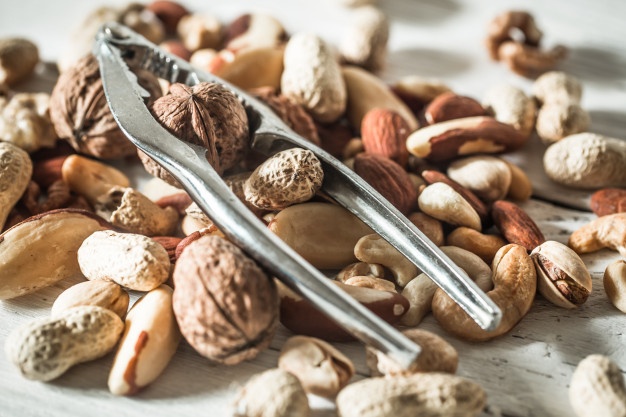A cousin of ginger, a false flower and a discovery by Christopher Columbus
That time of year to bring out the spices of smell to the holidays!
True or Green Cardamom (Elettaria cardamomum): A cousin of ginger?
This plant grows to 3 meters high and has thick rhizomes, similar to ginger, which is evidence of cardamom belonging to the same family as ginger. Only the seeds are useable and those are handpicked which explains the high price for this spice.
The essential oil of cardamom is volatile and they lose their flavour very fast when ground. That’s why it is recommended to use the pods and ground the seeds before using them.
Cardamom can offer a lot in traditional and natural medicine. The active substances in cardamom reduce hydrochloride acid (stomach acid) production and have an antibacterial effect. That explains why it has been recommended for centuries to be used for stomach ulcers, nausea, as well as for any issues of the urinary tract, diarrhea, lack of appetite and Roemheld-Syndrom.
Caution:
Because cardamom promotes motility, it may inadvertently cause biliary colic if there is a pre-existing gallbladder stone.
Tip: if there is a case of halitosis or if you want to help against alcohol breath then the best thing is to chew on a pod.
Indian cuisine has turned the use of cardamom in curries into an art. In some Arabic cultures, having cardamom in the coffee is essential. Some European countries welcome Christmas by adding cardamom and other spices to prepare Glühwein, a spiced or a mulled wine that warms up the body in the cold weather.


It’s not very easy to describe the taste of cardamom, an elegant, heavy and sweet flavour, with a note of eucalyptus and citrus. When cardamom pods are heated in a pan without oil then you get a very intense aroma.
Nutmeg flower, (Myristica fragrans houtt.), Mace – the false flower
Nutmeg flower has a more intense flavour than nutmeg. Nutmeg flower, also called mace, has a mixed flavour of clove, honey and nutmeg, ideal for baking and cooking. It is misleading to call it a flower, as in reality, it is the dried seed covering. The name, nutmeg flower for mace spice has been kept since the 12th century once the great Albertus Magnus mistook the covering for the flower. When the nutmeg ripens, it cracks up and releases the seeds. The coat around the seeds, red in beginning, grows lighter in colour as it dries. Mace spice is commonly available in ground form or in stripes.
The culinary use of both mace and nutmeg are very similar. But specifically, mace is used for example in the Bavarian white sausage, flavour mashed potato or a pinch of it in sweet apple pie, a spiced wine or other desserts. At Christmas time mace is a favourite spice to be used in baking cookies. As with nutmeg, mace is antispasmodic and has a positive effect on the GI.


Allspice (Pimenta dioica), clove pepper, discovered by Columbus
Used in sausages, as an ingredient in marinating sauces, for baking Christmas cookies, that’s how we know allspice, known also as clove pepper. The taste is a mix of 4 spices, clove, pepper, nutmeg and cinnamon, hence the name allspice or 4 spice.
The small and round seeds are dried and derived from the unripe fruits of a 12m high tree. Christopher Columbus discovered allspice in the Caribic Antilles. Interesting to know, that in the Caribic only the wood is used to BBQ and green leaves, but not the fruits.
In natural medicine, allspice is used for increasing the appetite and supporting digestion. Therefore, it is recommended to take a pinch of the spice as a digestif after eating heavy foods.
Disclaimer
Pascoe Canada does not offer health or medical advice as we are not healthcare practitioners. Please speak with your healthcare practitioner before beginning any program related to nutrition, diet, exercise, fitness, medical, and/or wellness. All content published by Pascoe Canada is developed through collaborating with licensed medical professionals and contributors. This includes text, graphics, images, and other material on the website, newsletter, and products (“Content”). This content is for informational purposes only and does not constitute medical advice. The content does not substitute professional medical advice, diagnosis, or treatment. Please always do your own research on whether this is for you along with your healthcare practitioner's advice. Always consult your healthcare practitioner prior to using specific herbs because you might have underlying conditions that need professional care. The content is general in nature and is subject to change. It is not intended to cover all possible uses, directions, precautions, warnings, drug interactions, allergic reactions, or adverse effects.
